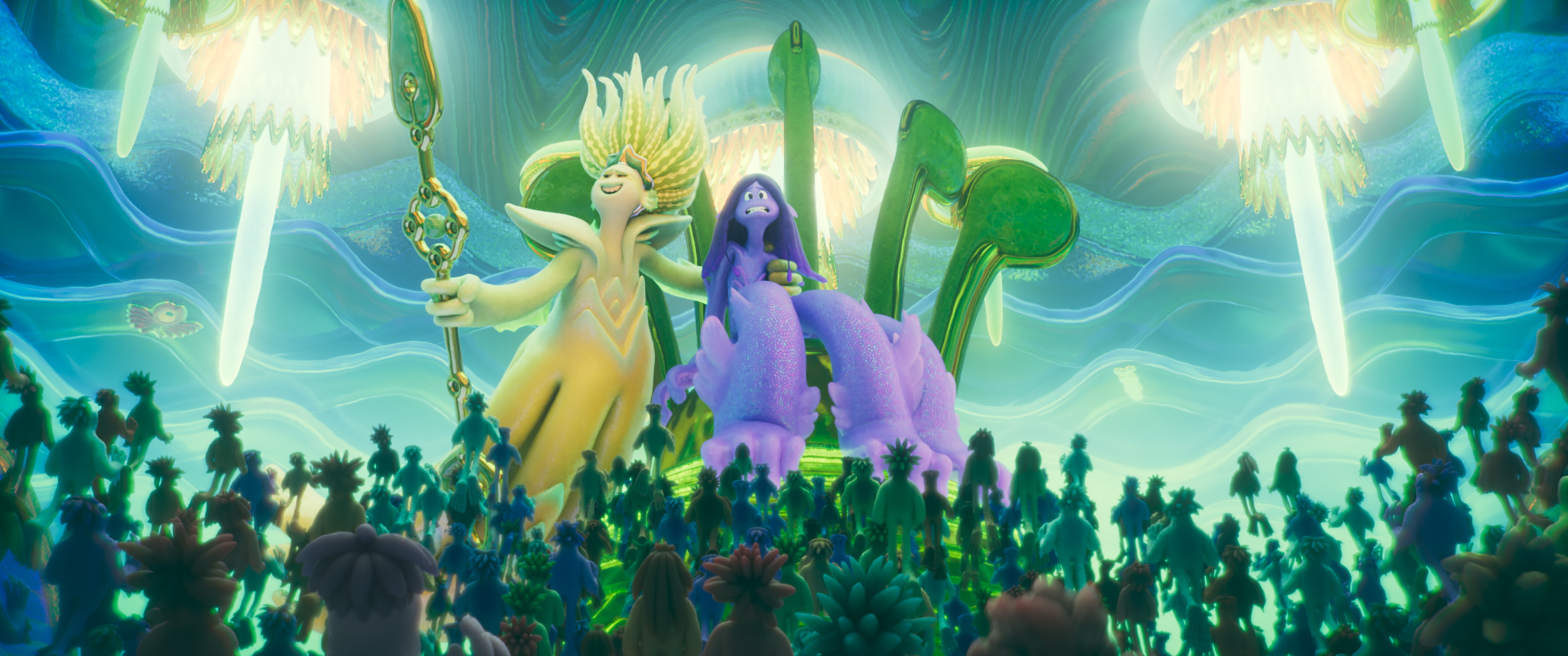Silver Screen Time
Faryn Pearl, C’14, discusses co-directing the DreamWorks Animation film Ruby Gillman, Teenage Kraken, and how internships she obtained through Penn Arts & Sciences shaped her career path.
Around 400 artists—from animators and special effects experts to lighting designers and sound mixers—contributed to DreamWorks Animation’s newest film, Ruby Gillman, Teenage Kraken. As co-director of the production, which was released in theaters on June 30, Faryn Pearl, C’14, influenced all of them.
“Making an animated movie is like an assembly line, with tons of artists coming in at different moments and building and building and building to the final shot,” Pearl says. “My job was to help make a coherent product with coherent characters and a coherent tone and message out of their combined work.”
A coming-of-age story about a teenager whose life upends when she learns she hails from a family of royal sea monsters, Ruby Gillman marks Pearl’s first foray into directing. She’d previously worked in storyboarding—creating a drawn representation of what a show or movie will look like—for projects including DreamWorks’ Trolls World Tour and the Disney Channel’s Big City Greens.
OMNIA recently spoke with Pearl, who earned her bachelor’s degree in classical studies with minors in English and fine arts, about her journey from her hometown of Holmdel, New Jersey, to Hollywood.
Have you always been interested in animation?
Growing up, I had a fascination with comics, which to me felt like the purest way to express ideas. If you can draw what’s going on inside your head, you can let a viewer into your whole world. To this day, when something is frustrating me, I’ll draw a fictionalized version of it, which is very cathartic and helps me laugh about things I might not have laughed about otherwise.
My father had a big stack of late-’70s and early-’80s MAD magazines that were an early source of inspiration. I also loved reading graphic novels, like Maus by Art Spiegelman and Persepolis by Marjane Satrapi. In terms of movies, seeing Spirited Away by Hayao Miyazaki in the theater was a seminal experience. The fantasy of it transported me—I knew what I was watching wasn’t real, but I was still consumed by emotion. Any movie can create moments like that, but it’s especially true with animation.
Did you enroll at Penn knowing you wanted to pursue a career in film?
As an East Coaster, I didn’t know anyone who worked in entertainment, so a career in the industry never felt tangible, and I never viewed drawing comics or watching TV and movies as anything other than hobbies. I considered going into journalism, but when looking at internships, I felt drawn to productions like Sesame Street, where I ended up working for two summers. That’s when I realized a job in entertainment was a real thing I could do.
Junior year, I got an internship at Nickelodeon Animation Studios through RealArts @ Penn and worked on a long-running series called The Fairly OddParents. While there, I saw what the storyboard artists were doing, and it hit me: This is it. Immediately, I went from being incredibly unsure about my goals to incredibly specific about wanting to be a storyboard artist.
How did you transition from that to co-directing a major production?
I had been working as a storyboard artist for several years and was head of story, the person who oversees all the storyboard artists, for Ruby Gillman when our first director had to step down and Kirk DeMicco, who’d directed Croods and Vivo, took over. By that point I’d become very attached to the characters, especially Ruby, and I was determined to see the story through. So I pitched myself as co-director, and Kirk said yes.
Initially, every day was intimidating, because I went from being one part of the assembly line to providing guidance to every single department, even those I had no experience with. There were a few meetings where afterward I was like, “Okay, I need to go figure out what all that meant.” I did a lot of homework on the side to make sure I was as capable as I could be.
What about Ruby’s character made you feel close to her?
We deliberately made Ruby vulnerable, someone who has a lot of potential but doesn’t see it in herself. I know I’m not the only one who felt insecure like that when I was a teenager, and to be honest, I still feel like that sometimes. In the beginning, Ruby's a wallflower, and then we watch her confidence grow. You don’t get to see a fully rounded female character like that in animation very often.
Do you want to direct again?
I knew I wanted to be a director someday but assumed it would happen farther down the line. There’s such joy in telling stories through the magic of animation. It’s incredible how many hands touch every second of an animated movie, and I feel very lucky that I got to interact with the entire process. It has been a privilege to be in this role, and I absolutely want to do it again.




